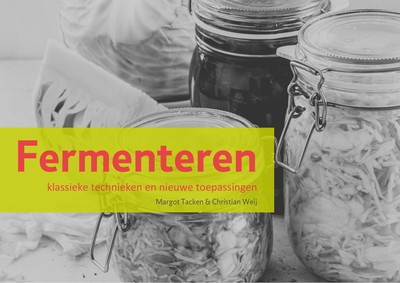Carnitine/choline acyltransferases play diverse roles in energy metabolism and neuronal signalling. Our knowledge of their evolutionary relationships, important for functional understanding, is incomplete. Therefore, we aimed to determine the evolutionary relationships of these eukaryotic transferases. We performed extensivephylogenetic and intron position analyses. We found that mammalian intramitochondrial CPT2 is most closely related to cytosolic yeast carnitine transferases (Sc-YAT1 and 2), whereas the other members of the family are related to intraorganellar yeast Sc-CAT2. Therefore, the cytosolically active CPT1 more closely resembles intramitochondrial ancestors than CPT2. The choline acetyltransferase is closely related to carnitine acetyltransferase and shows lower evolutionary rates than long chain acyltransferases. In the CPT1 family several duplications occurred during animal radiation, leading to the isoforms CPT1A, CPT1B and CPT1C. In addition, we found five CPT1-like genes in Caenorhabditis elegans that strongly group to the CPT1 family. The long branch leading to mammalian brain isoform CPT1C suggests that either strong positive or relaxed evolution has taken place on this node. The presented evolutionary delineation of carnitine/choline acyltransferases adds to current knowledge on their functions and provides tangible leads for further experimental research.
DOCUMENT

The exploitation of the metagenome for novel biocatalysts by functional screening is determined by the ability to express the respective genes in a surrogate host. The probability of recovering a certain gene thereby depends on its abundance in the environmental DNA used for library construction, the chosen insert size, the length of the target gene, and the presence of expression signals that are functional in the host organism. In this paper, we present a set of formulas that describe the chance of isolating a gene by random expression cloning, taking into account the three different modes of heterologous gene expression: independent expression, expression as a transcriptional fusion and expression as a translational fusion. Genes of the last category are shown to be virtually inaccessible by shotgun cloning because of the low frequency of functional constructs. To evaluate which part of the metagenome might in this way evade exploitation, 32 complete genome sequences of prokaryotic organisms were analysed for the presence of expression signals functional in E. coli hosts, using bioinformatics tools. Our study reveals significant differences in the predicted expression modes between distinct taxonomic groups of organisms and suggests that about 40% of the enzymatic activities may be readily recovered by random cloning in E. coli.
DOCUMENT
Veel van onze favoriete voedingsmiddelen zijn gefermenteerd: brood, kaas, yoghurt, chocolade, koffie, olijven, salami, zuurkool, wijn, bier. De techniek van fermenteren is eeuwenoud en geniet een toenemende belangstelling. Wat gebeurt er in een product, tijdens een fermentatieproces, op het niveau van micro-organismen en moleculen? Hoe ontstaan de complexe smaken? Zijn gefermenteerde producten veilig en gezond? Welke rol kan fermentatie spelen in duurzame voedselproductie? Deze reader geeft antwoorden op deze vragen. Toepassing als onderwijsmateriaal (bovenbouw vo, mbo, hbo); bevat twee recepten en verwijzingen naar video’s en experimenten.Deze tekst verscheen in verkorte vorm in: Lugtenberg, Ben. (Red.) (2023). "Gezond met Microben".
DOCUMENT

Inaugurele rede uitgesproken op 9 mei 2019 door Dr. J.E. (Judith) van de Mortel bij de benoeming tot lector “Gezonde plant op een vitale en duurzame bodem” aan HAS Hogeschool Venlo. De krant werd uitgegeven ter ere van de inaugurele rede. Dit deed ze op een bijzondere manier: alle genodigden gingen met een denkbeeldige tijdmachine vooruit naar het jaar 2030 waar ze Judith ontmoetten. Judith keek vervolgens terug naar het jaar 2019 en stelde dat ze hoopt dat de sector in de tussenliggende jaren bereikt heeft dat alle agrarische bodems in Nederland duurzaam beheerd worden door verschillende aanpakken te combineren. Om dit te illustreren schetste ze een beeld van hoe de agrarische onderneming er in 2030 uitziet. Met het lectoraat wil ze hieraan bijdragen. De krant is dan ook geschreven alsof het 9 mei 2030 is.
MULTIFILE

Publicatie bij de rede, uitgesproken bij de aanvaarding van het ambt als lector Green Biotechnology aan Hogeschool Inholland te Amsterdam op 20 mei2015 door dr. C.M. Kreike
DOCUMENT

In een tijd waarin de wereld geconfronteerd wordt met een toenemende bevolking en de daaruit voortvloeiende behoefte aan voedsel, staat het lectoraat Eiwittransitie voor een uiterst relevante uitdaging. De groeiende vraag naar eiwitten en de noodzaak om onze consumptiegewoonten in balans te krijgen met natuur en onze gezondheid vormen de kern van de missie van dit lectoraat.
DOCUMENT
